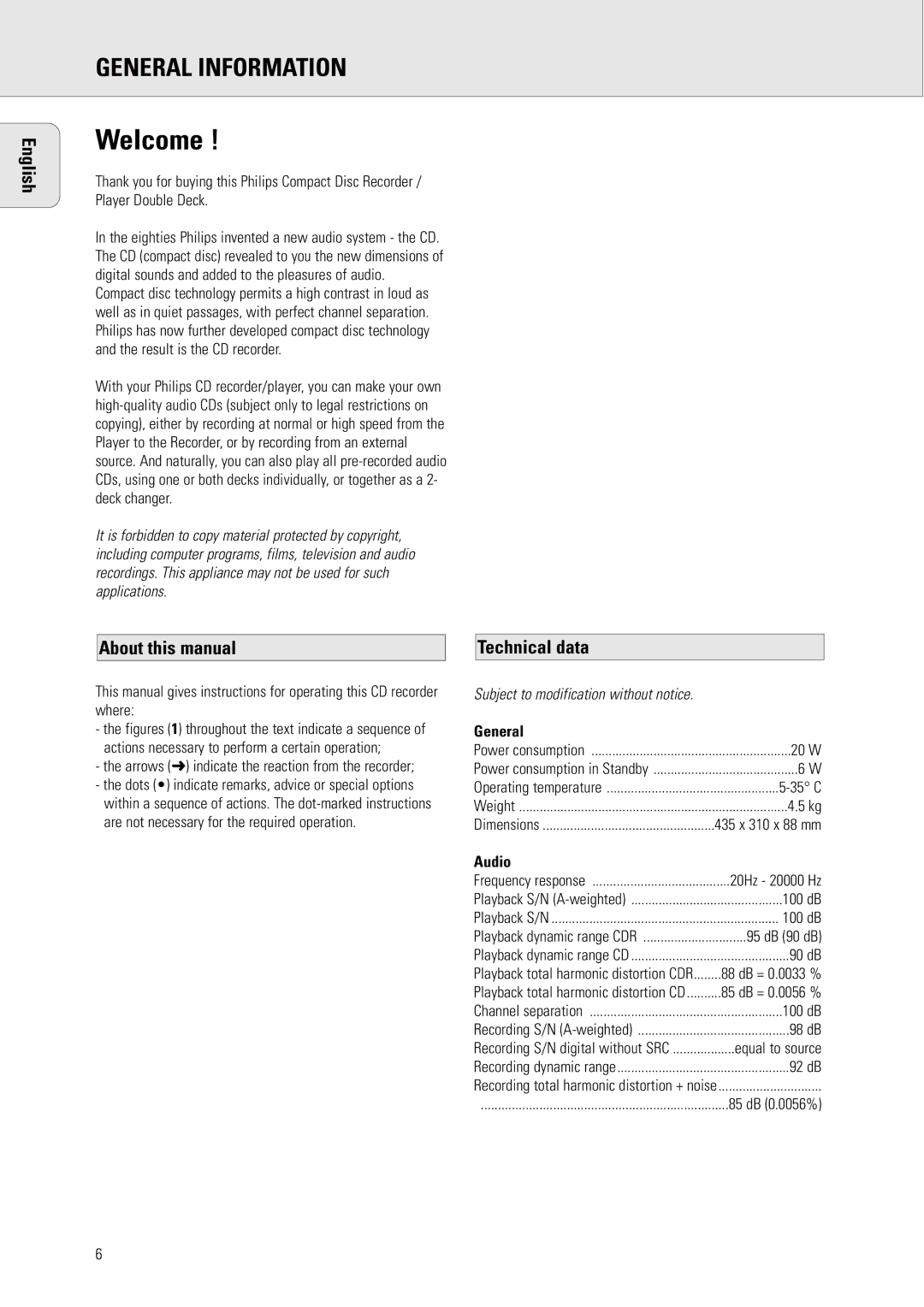
English
GENERAL INFORMATION
Welcome !
Thank you for buying this Philips Compact Disc Recorder / Player Double Deck.
In the eighties Philips invented a new audio system - the CD. The CD (compact disc) revealed to you the new dimensions of digital sounds and added to the pleasures of audio.
Compact disc technology permits a high contrast in loud as well as in quiet passages, with perfect channel separation. Philips has now further developed compact disc technology and the result is the CD recorder.
With your Philips CD recorder/player, you can make your own
It is forbidden to copy material protected by copyright, including computer programs, films, television and audio recordings. This appliance may not be used for such applications.
About this manual
This manual gives instructions for operating this CD recorder where:
-the figures (1) throughout the text indicate a sequence of actions necessary to perform a certain operation;
-the arrows (➜ ) indicate the reaction from the recorder;
-the dots (•) indicate remarks, advice or special options within a sequence of actions. The
Technical data
Subject to modification without notice. |
|
General |
|
Power consumption | 20 W |
Power consumption in Standby | 6 W |
Operating temperature | |
Weight | 4.5 kg |
Dimensions | 435 x 310 x 88 mm |
Audio |
|
Frequency response | 20Hz - 20000 Hz |
Playback S/N | 100 dB |
Playback S/N | 100 dB |
Playback dynamic range CDR | 95 dB (90 dB) |
Playback dynamic range CD | 90 dB |
Playback total harmonic distortion CDR | 88 dB = 0.0033 % |
Playback total harmonic distortion CD | 85 dB = 0.0056 % |
Channel separation | 100 dB |
Recording S/N | 98 dB |
Recording S/N digital without SRC | equal to source |
Recording dynamic range | 92 dB |
Recording total harmonic distortion + noise ..............................
........................................................................85 dB (0.0056%)
6
